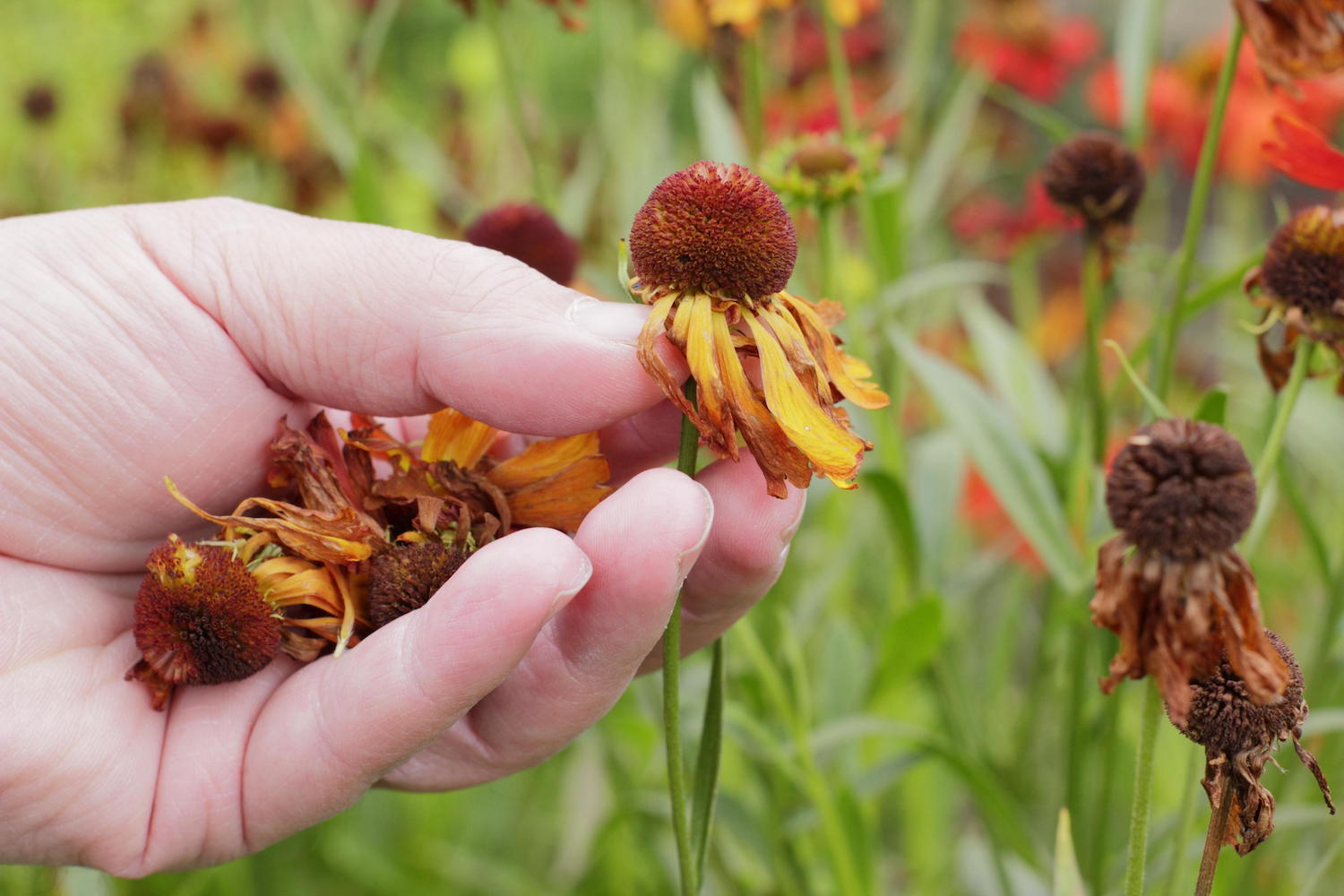When to deadhead perennials and annuals – the trick to encourage new spring blooms for next year
Deadheading your blooms will keep your plant looking its best and producing more flowers, but experts urge you not to prune them all...


You might not want to hear this, but fall is just around the corner. Before you hunker down indoors with a pumpkin-spiced latte, however, your backyard will benefit from some end-of-summer treatment - and that means dedicating time to deadheading.
As far as gardening practices go, deadheading is probably the most rudimentary out there (besides, perhaps, watering your plants). But, despite the fact it's not making its way into any advanced gardening guides, pruning your perennial and annual blooms is key to keeping your plant looking its best and extending the flowering season.
Before fall is in full swing, head outside and snip spent blooms, but if you want another bright and bushy display in your modern garden come spring, expert gardeners are quick to point out that you shouldn't trim them all. Here we explain why, alongside some practical tips on the best deadheading practice.
Why is deadheading important?

'Deadheading is the practice of removing faded or dead flowers from plants, primarily to encourage further blooming,' explains Tony O'Neill, gardening expert at Simplify Gardening. It might be a menial task, but it's nevertheless an important one if you want your flower garden to produce beautiful blooms for as long as possible.
Put simply, pruning flowerheads that are past their best will prevent your plant from wasting energy on dead blooms. 'This promotes reblooming by directing energy to new flower production,' explains Diana Cox, blogger at The Gardening Talk. 'It also maintains a tidy, attractive appearance in flower beds and containers and prevents self-seeding of unwanted plant volunteers.'
What's the best way to deadhead a plant?

It might sound like the easiest job in the world, but there is actually a load of deadheading mistakes that many of us are guilty of making, from leaving it too late to trimming in the wrong place.
While some flowerheads are delicate enough to snip with your fingers, the easiest and cleanest way to make a good cut is with a pair of pruning shears, especially where tougher, woody stems like roses are concerned. 'Use pruners or scissors to snip off spent blooms just above a leaf node,' says Diana. 'For tiny flowers, shear off the top one-third of stems using hedge shears, and remember to remove the deadheaded material and destroy it to prevent disease spread.'
The Livingetc newsletters are your inside source for what’s shaping interiors now - and what’s next. Discover trend forecasts, smart style ideas, and curated shopping inspiration that brings design to life. Subscribe today and stay ahead of the curve.
On the topic of diseases, it's also a good idea to clean your tools between snips of different plants. Developed plants with dead blooms can sometimes have hidden diseases, so wipe the blades of your pruners with alcohol wipes before moving on to the next plant.
When is the ideal time for deadheading?

According to Tony, the best time to deadhead varies from plant to plant. 'However, as a general rule, regular deadheading throughout the blooming season ensures a tidy look and prolonged flowering,' he says.
That being said, now is a more important time than ever to assess the state of the blooms in your backyard. Not only do deadheads attract pests, mildew, and disease, but as blooming comes to an end, snipping spent flowerheads will encourage new flowers again come spring, helping the plant to conserve its energy.
Remember to stop deadheading to encourage reseeding
There's another key reason your garden will benefit from some deadheading attention this time of year, and that's because it's the ideal time to encourage a process called reseeding (especially if you only planted annuals).
'Towards the end of the season, you should always leave some heads for reseeding or to provide food for wildlife,' says Tony. Seed heads offer a meal for birds when pickings are slim, and the hollowed-out standing stems make the perfect home for insects to nest.
Leaving a few deadheads will also mean new blooms once warmer weather returns. 'If you want certain plants to self-seed, allow a few flower heads to remain and go to seed,' says Tony. 'This is particularly the case with flowers like cosmos or poppies, but remember that reseeding can sometimes lead to overcrowding.'
Need deadheading equipment? Try these.

Lilith Hudson is a freelance writer and regular contributor to Livingetc. She holds an MA in Magazine Journalism from City, University of London, and has written for various titles including Homes & Gardens, House Beautiful, Advnture, the Saturday Times Magazine, Evening Standard, DJ Mag, Metro, and The Simple Things Magazine.
Prior to going freelance, Lilith was the News and Trends Editor at Livingetc. It was a role that helped her develop a keen eye for spotting all the latest micro-trends, interior hacks, and viral decor must-haves you need in your home. With a constant ear to the ground on the design scene, she's ahead of the curve when it comes to the latest color that's sweeping interiors or the hot new style to decorate our homes.


